We are working with nature, using the self-protection mechanism of biological epidermis to fabricate future wearable materials, thus reducing the use of animal leather.
WEI Qianjie 魏倩洁 YANG Yanbin 杨彦斌 ZHANG Jinwen 张竞文
The skin is the first barrier of life for the human body as well as other living creatures to protect them from attacks from the outside world. In winter, people use mink coats or rabbit fur hats to keep warm. For this reason a large number of animals lose their skins and are even slaughtered. On the other hand, people consume the bodies and fruits of plants, and their outer skins become part of the landfill.

In fact, the outer skin of plants, which is usually discarded, also has properties that cannot be ignored. Therefore, we tried to use it as a surface material for wearable products, using the material itself to achieve a self-protective effect. We use plant-based glues and environmentally friendly preservatives to treat plant materials to resist decay, thus preserving their original form and properties.

Plant / Water Flow
The outer skin is defensive, not easy to break, not easy to be eaten by insects.
A horse’s hooves / Hard Soil
Because a horse lives on hard soil, it needs hooves to protect its feet, or its feet will wear out.
Bird feathers / Wind and Rain
Warmth, protection from rain and cold, flight.
Snakes / Grass
Snakes have no sweat glands, dry skin, and need to reduce water evaporation.
Fish scales / Water Flow
Reduce the friction between fish and water, reduce drag.
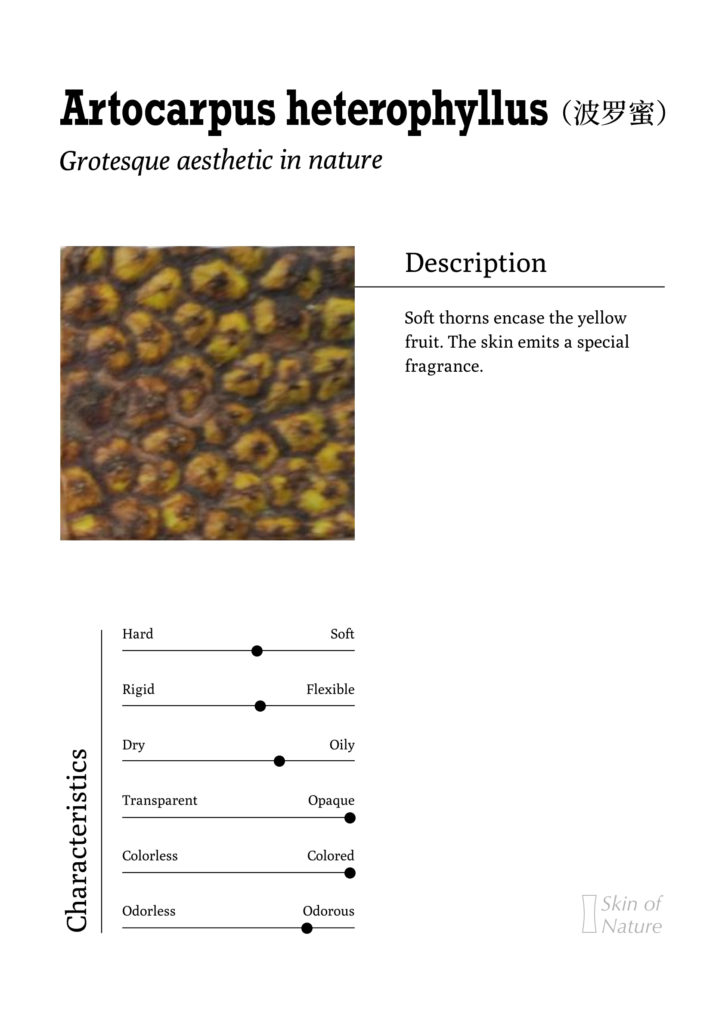



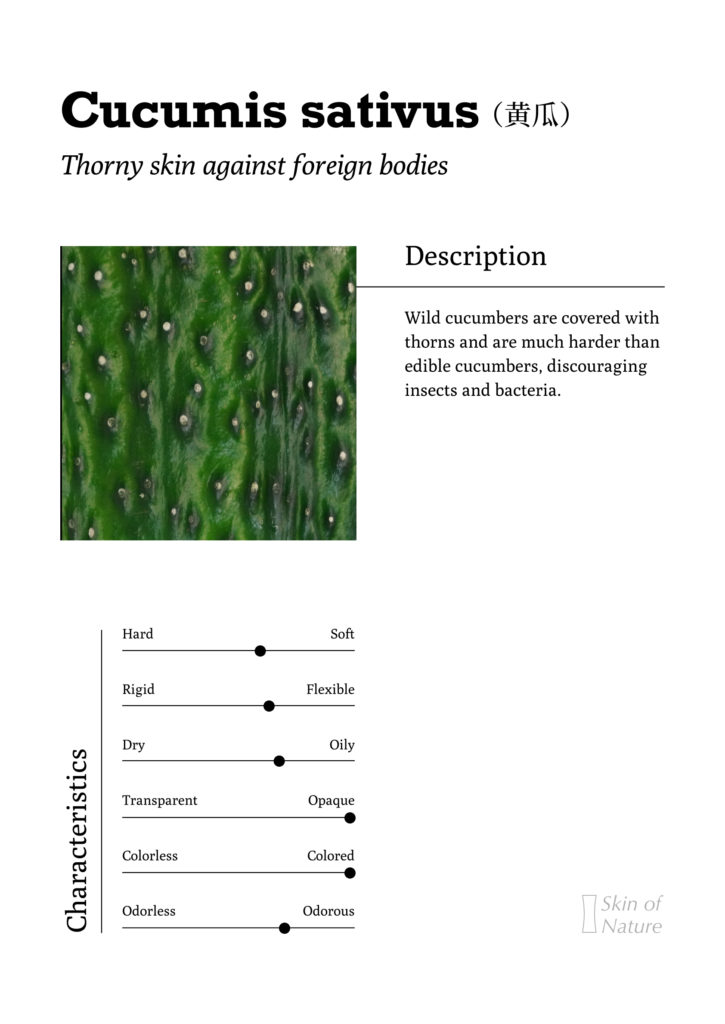

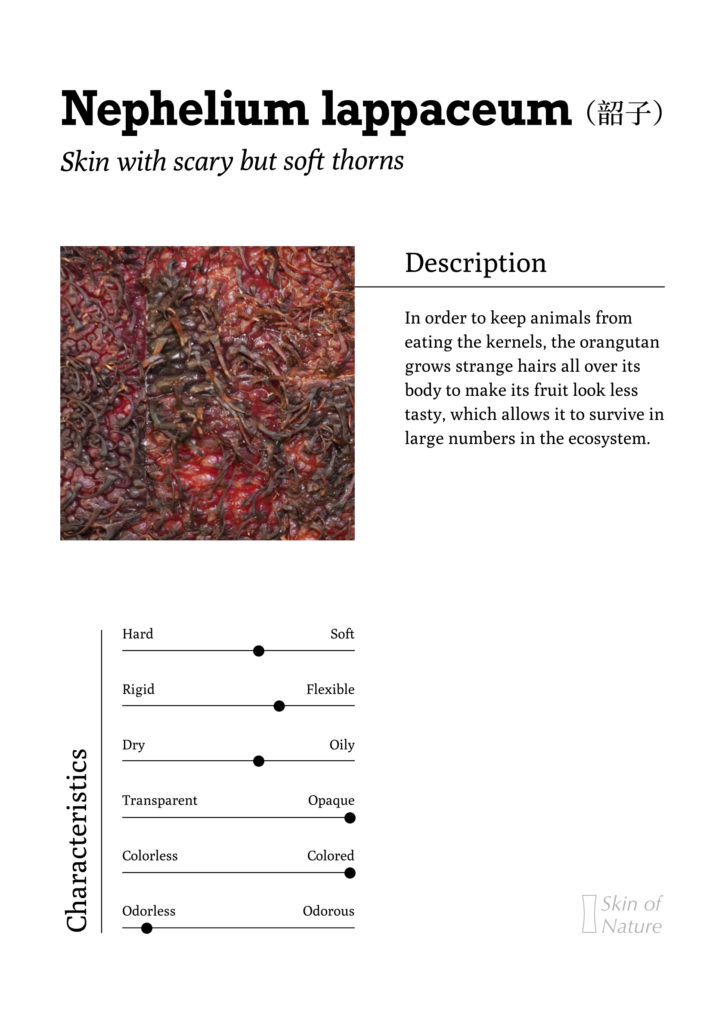
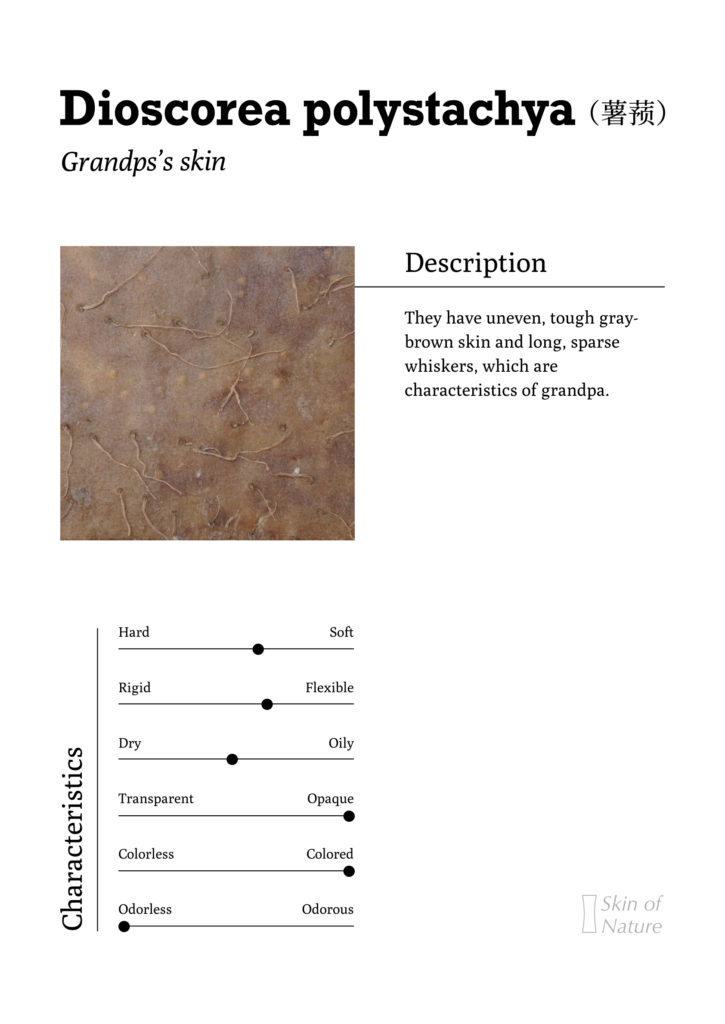


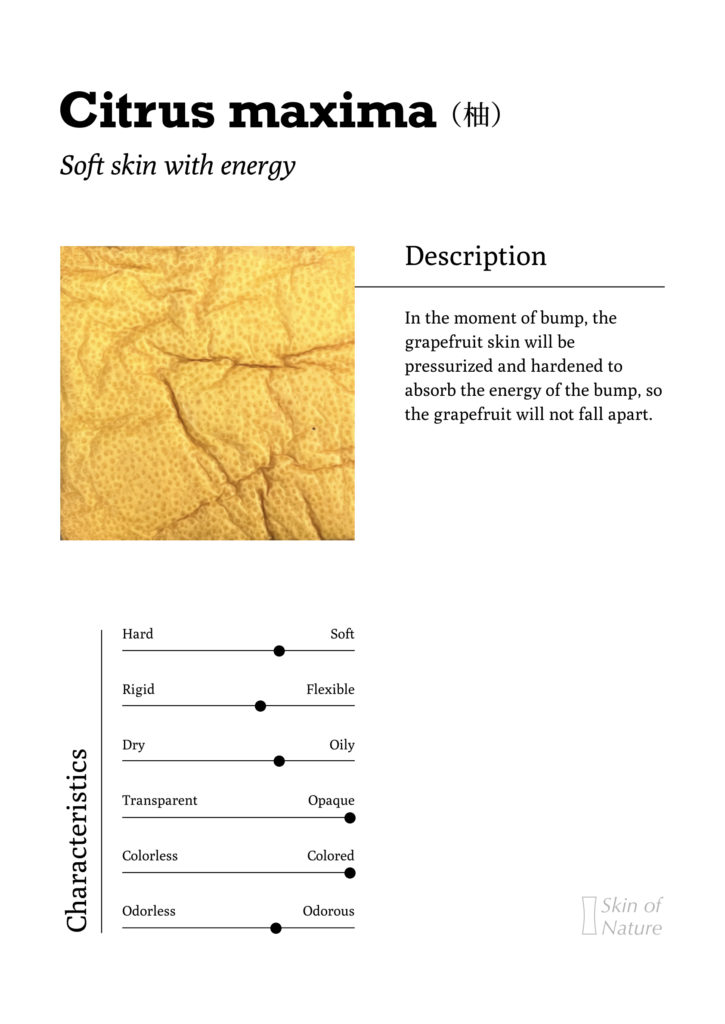
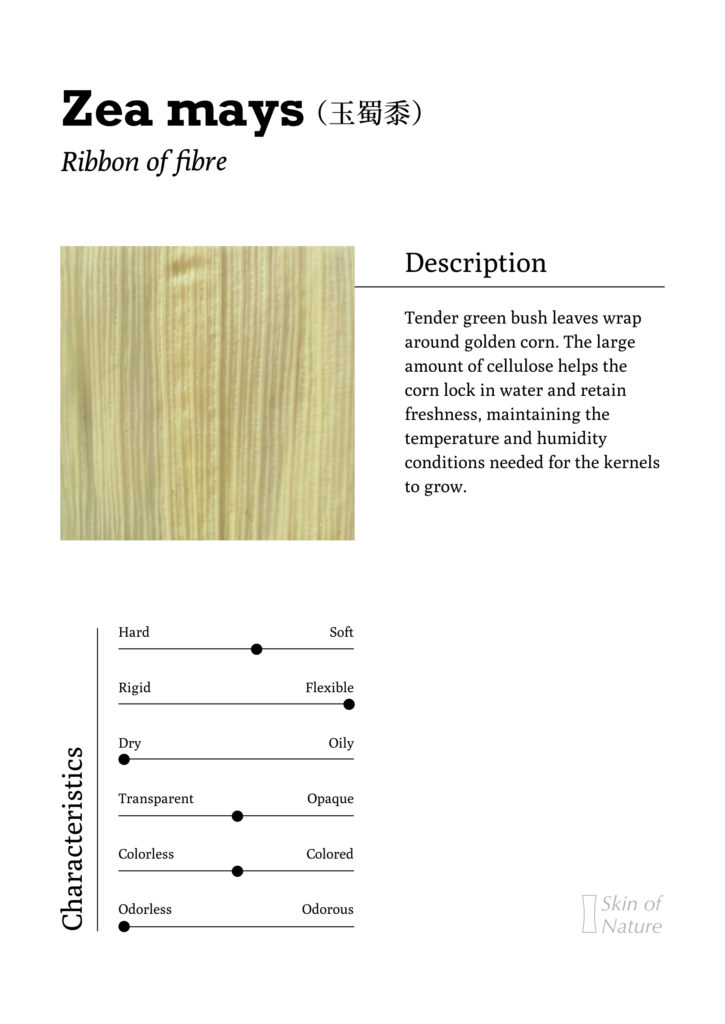



We started our experiments with palm, pineapple, cucumber, and structural bark. The naturally hydrophobic fibers of the palm bark’s midsection allow for flipper gloves that enhance swimming speed in the water; thick pineapple bark makes facial jewelry that protects the cheekbones while keeping them moist and breathable through small holes on the inside; and the spines on the cucumber’s skin keep insects and bacteria at bay…

We use plant-based glues and environmentally-friendly preservatives to treat the plant skin against corruption to maintain its original shape and properties and create material cards.


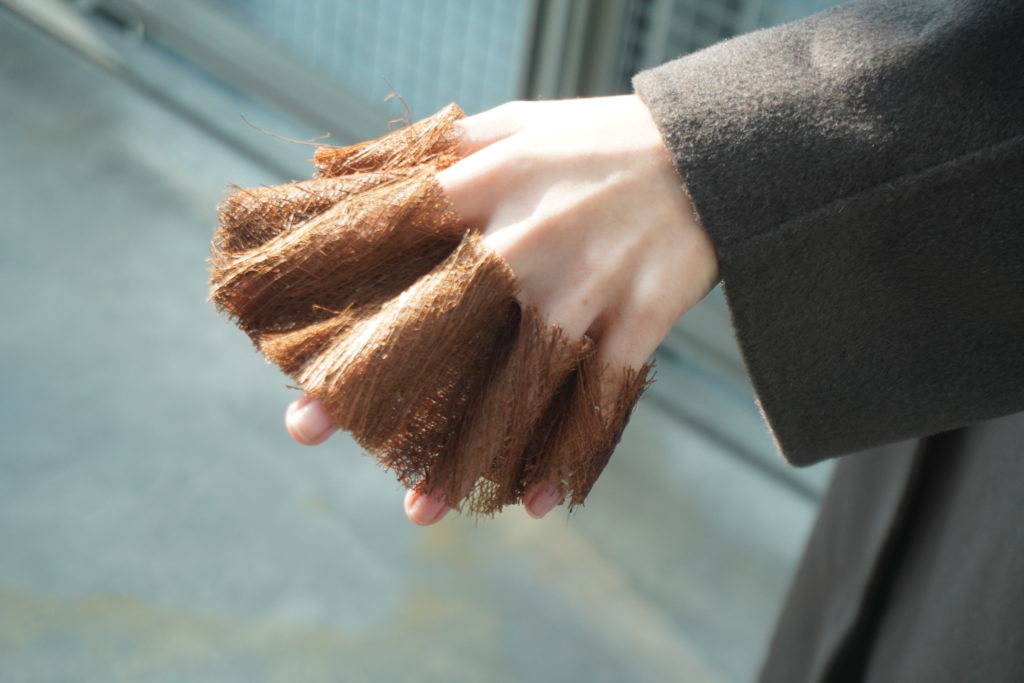

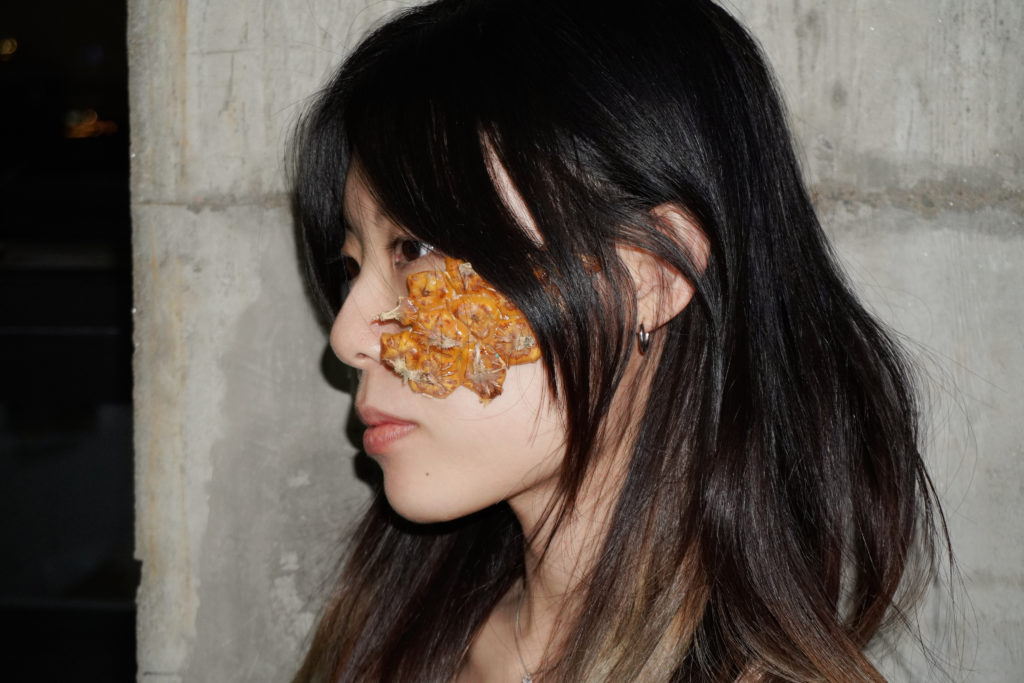
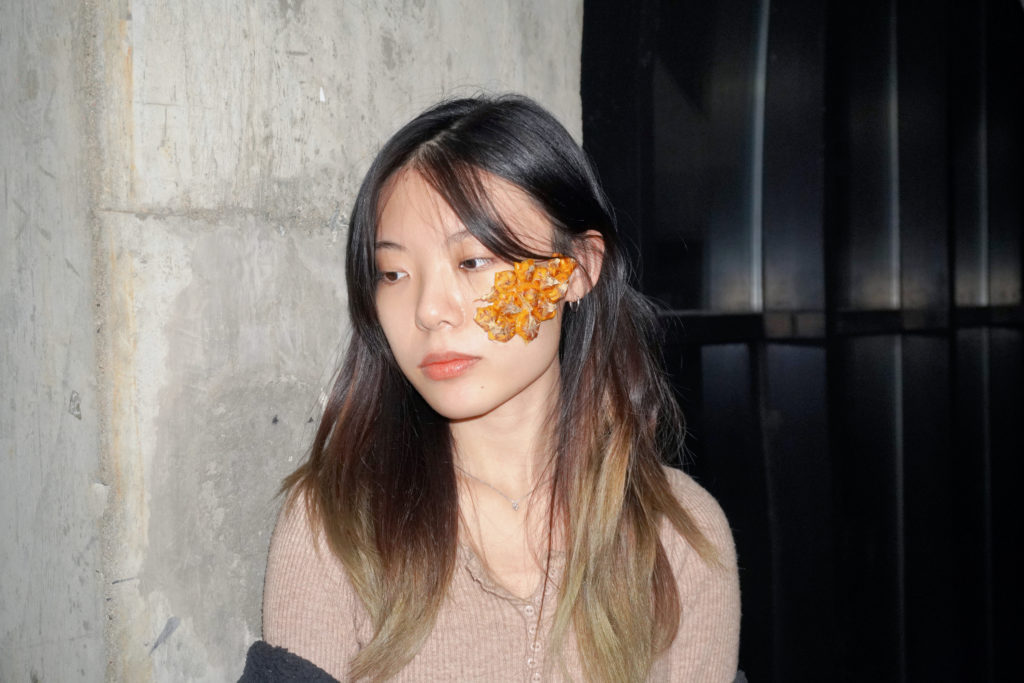
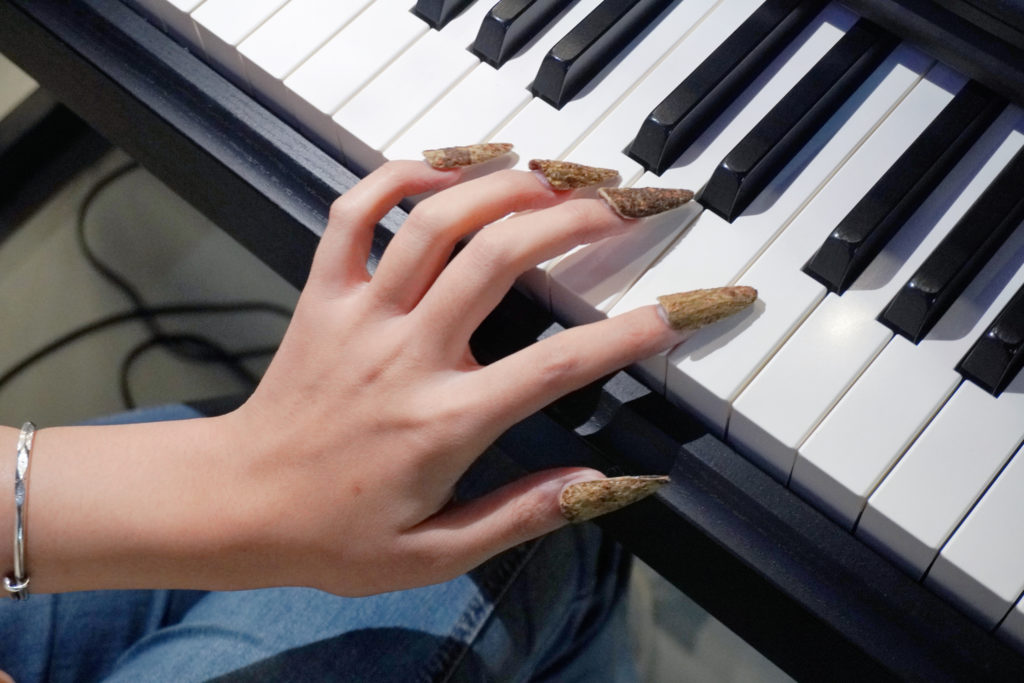

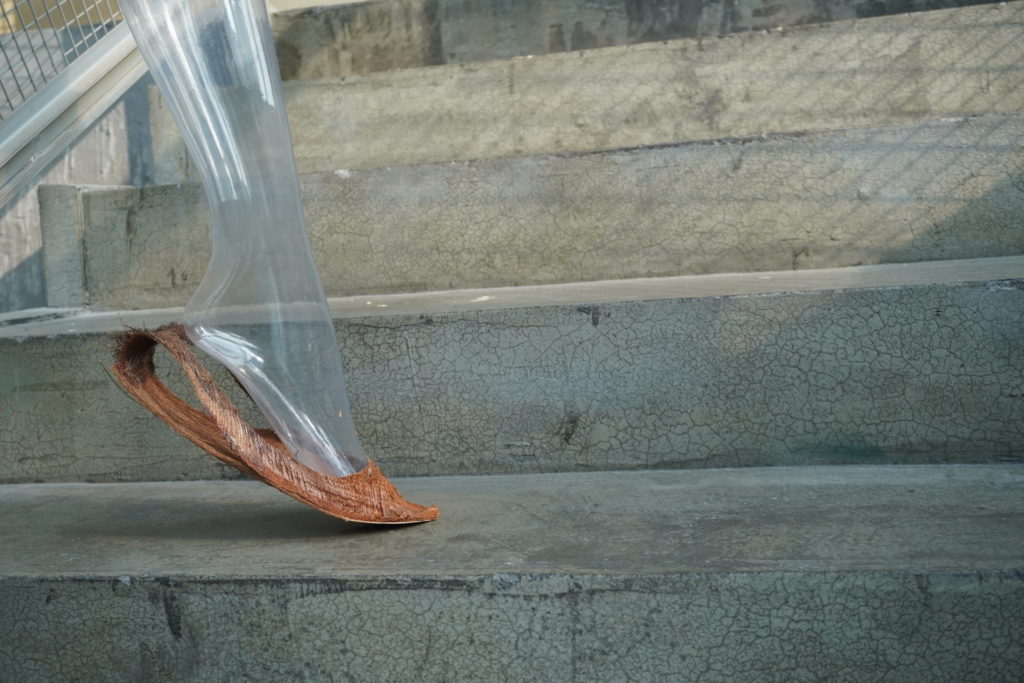
Skin of Nature has led to a rethinking of the relationship between humans and nature. We hope that in the future, people can make wearable products through recycling and planting, rather than through industrial manufacturing. The by-products of planting can be further processed while retaining their epidermal biological characteristics to become biological materials as a second skin for humans, reducing the use of animal leather and thus reducing environmental pollution and harm to animals.